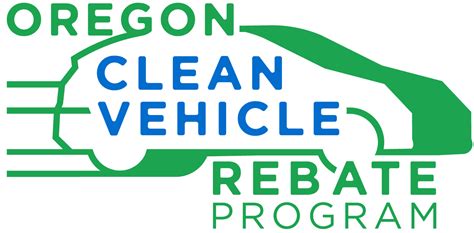As the world grapples with the immense challenges of climate change, the shift towards sustainable transportation is becoming increasingly urgent. Among the various initiatives aiming to foster a greener future, Oregon’s Clean Vehicle Rebate Program (CVRP) stands out as a beacon of opportunity. This program not only encourages the adoption of electric vehicles (EVs) but also reflects broader trends in environmental policy and public sentiment regarding clean energy. In this article, we will explore the components, impacts, and future prospects of the CVRP and its role in accelerating electric car adoption in Oregon.
Understanding the Clean Vehicle Rebate Program
Launched by the Oregon Department of Environmental Quality (DEQ) in 2018, the Clean Vehicle Rebate Program is designed to incentivize Oregonians to purchase or lease electric vehicles. The CVRP provides cash rebates of up to $2,500 for eligible electric cars, thereby lowering the financial barriers that often deter potential EV buyers.
How the Program Works
The CVRP operates as follows:
- Eligibility: To qualify for the rebate, consumers must purchase or lease a new electric vehicle that meets certain criteria, such as being a battery electric vehicle (BEV) or plug-in hybrid electric vehicle (PHEV).
- Rebate Application: After acquiring an eligible vehicle, individuals can apply for the rebate through the DEQ’s online portal. Documentation, including proof of purchase and vehicle specifications, is required.
- Rebate Distribution: Once the application is approved, the rebate is issued as a check, which can significantly reduce the effective purchase price of the vehicle.
The Impact of the CVRP on Electric Vehicle Adoption
Since its inception, the Clean Vehicle Rebate Program has had a measurable impact on the adoption of electric vehicles in Oregon. According to DEQ statistics, thousands of rebates have been awarded, resulting in a substantial increase in electric vehicle registrations across the state. But the program’s influence extends beyond mere numbers; it is reshaping perceptions of electric car ownership.
Financial Incentives Drive Consumer Behavior
Financial incentives play a crucial role in consumer decision-making. The CVRP’s rebates make electric vehicles more affordable, particularly for low- and middle-income households that may have previously considered EVs out of their financial reach. By easing the initial cost burden, the program helps more residents make the shift from traditional gas-powered vehicles to cleaner alternatives.
Environmental Benefits
Every electric vehicle on the road represents a step toward reducing greenhouse gas emissions and improving air quality. The CVRP is an essential part of Oregon’s strategy to meet state emissions reduction targets. As the number of electric vehicles increases, so does the potential for reducing pollutants that contribute to climate change and urban air quality issues, promoting a more sustainable and health-conscious environment.
Challenges and Considerations
While the Clean Vehicle Rebate Program has made significant strides in promoting electric car adoption, challenges remain. One of the primary concerns is the availability of charging infrastructure, especially in rural areas where electric vehicle ownership may be less feasible. Expanding the network of charging stations is critical to ensure that drivers have access to necessary charging options outside urban settings.
Moreover, public awareness and understanding of the benefits of electric vehicles continue to be pivotal. Initiatives aimed at educating consumers about EV advantages, including lower maintenance costs and lifetime savings, can further encourage adoption.
The Future of Oregon’s Clean Vehicle Rebate Program
Looking ahead, the Clean Vehicle Rebate Program is poised to evolve and adapt to the changing landscape of electric mobility. With advancements in battery technology and a growing variety of electric vehicle models, the program may expand its offerings to include rebates for used electric vehicles or incentives for commercial electric fleets.
Moreover, the Oregon legislature is exploring additional climate-friendly policies that complement the CVRP, such as expanding renewable energy sources and investing in public transportation options, thereby creating a more sustainable and integrated approach to transportation.
Conclusion
Oregon’s Clean Vehicle Rebate Program serves as a prime example of how targeted policy initiatives can catalyze significant changes in consumer behavior and environmental stewardship. By making electric vehicles more accessible, it not only supports the state’s emission reduction goals but also enhances public awareness and acceptance of clean technologies. As the program continues to evolve, it is expected to play an integral role in the broader context of sustainable transportation and environmental responsibility.
FAQs
- What types of vehicles qualify for the Clean Vehicle Rebate Program?
- Eligible vehicles include new battery electric vehicles (BEVs) and plug-in hybrid electric vehicles (PHEVs) that meet specific criteria set by the Oregon DEQ.
- How much can I receive in rebates?
- The program offers rebates of up to $2,500, depending on the type of vehicle and the buyer’s income level.
- How do I apply for a rebate?
- After purchasing or leasing an eligible electric vehicle, you can apply for the rebate through the Oregon DEQ’s online application portal. Necessary documentation must be submitted for approval.
- Is the Clean Vehicle Rebate Program only for residents of Oregon?
- Yes, the program is intended specifically for Oregon residents who purchase or lease eligible electric vehicles in the state.
- What should I do if I live in a rural area with limited charging infrastructure?
- For those in rural areas, it’s advisable to research local charging options and consider the range of the specific electric vehicle model before purchasing. Advocating for more charging stations in your area is also an important step toward advancing EV adoption.
Download Oregon Clean Vehicle Rebate Program
